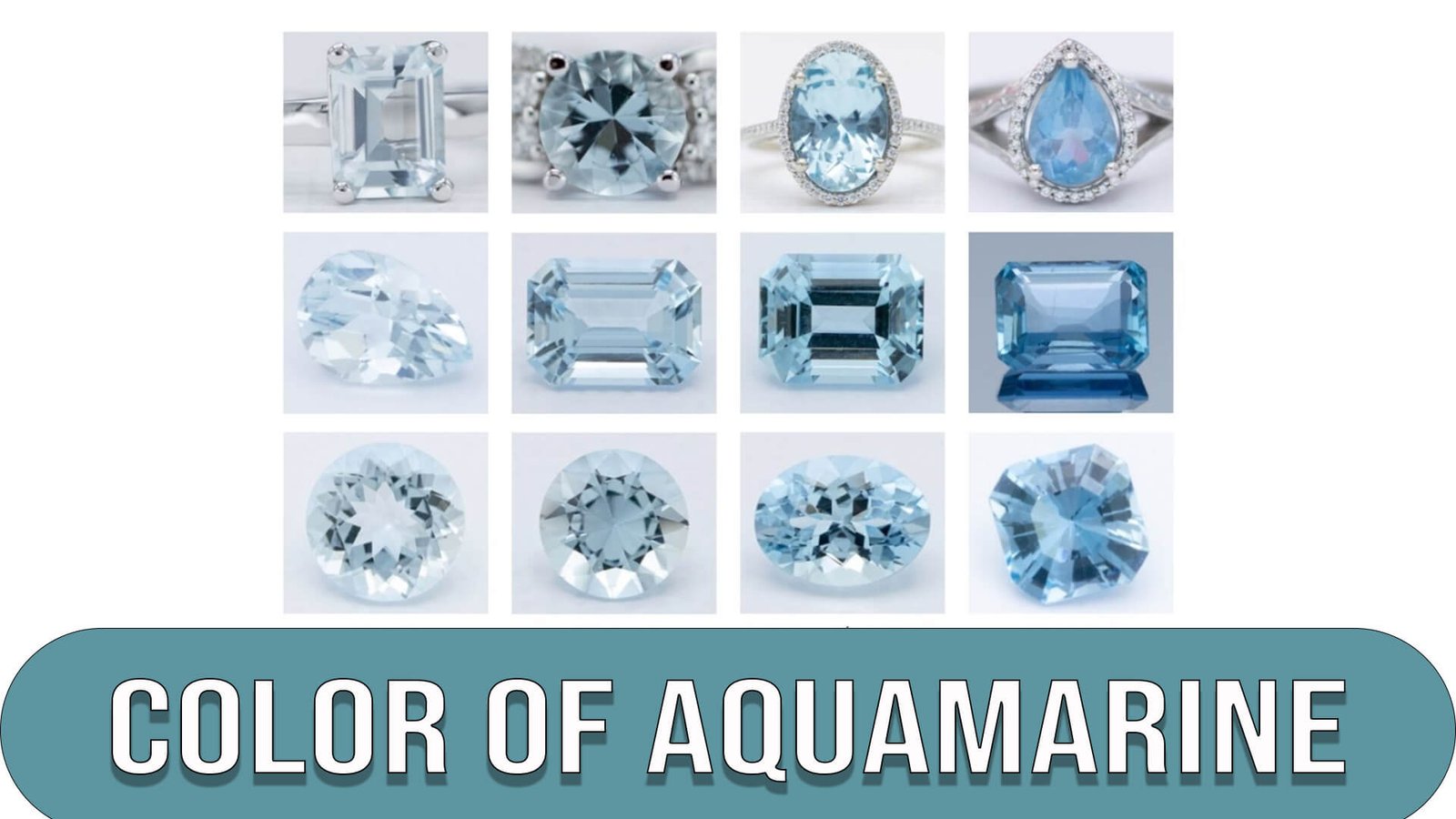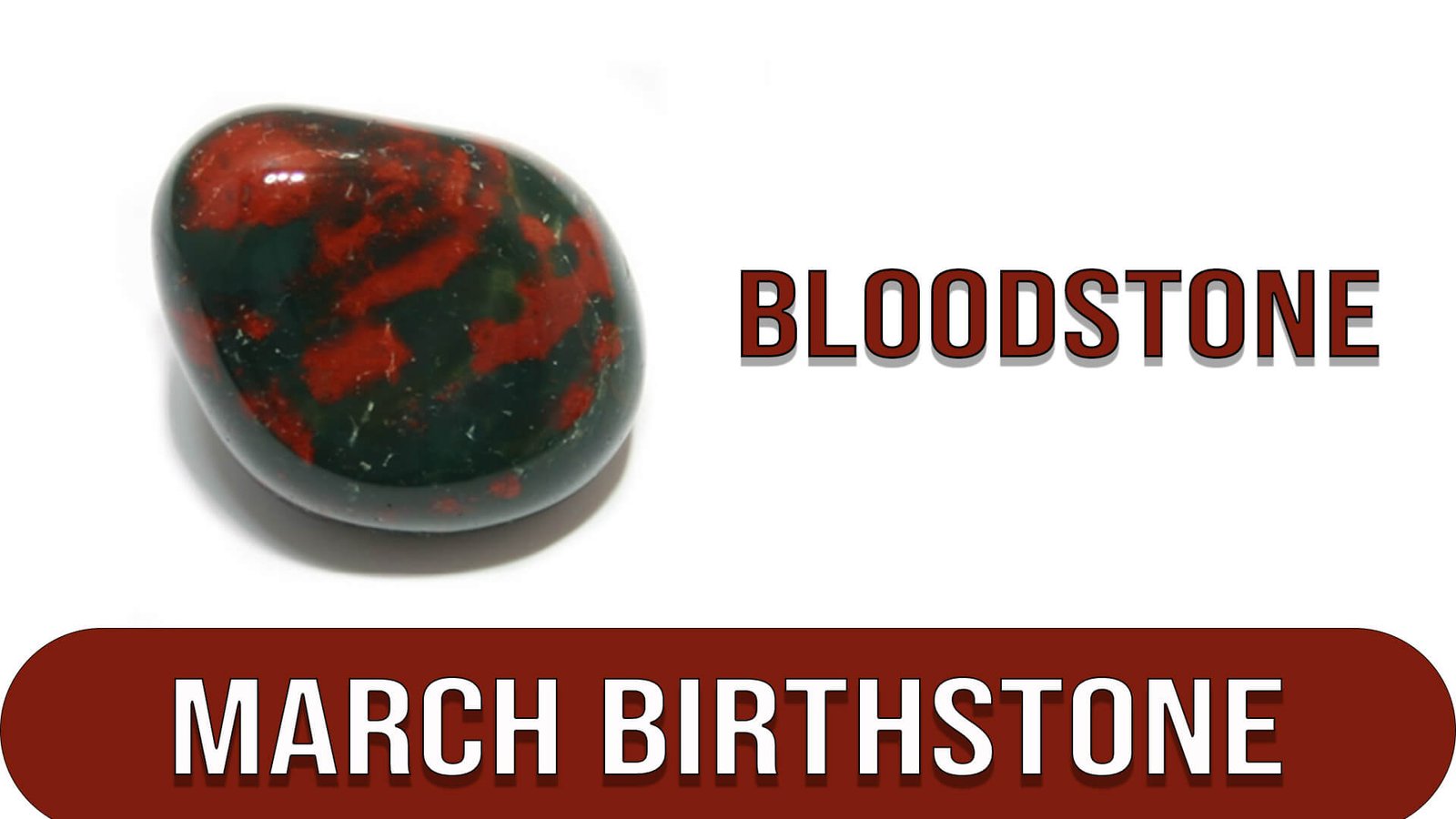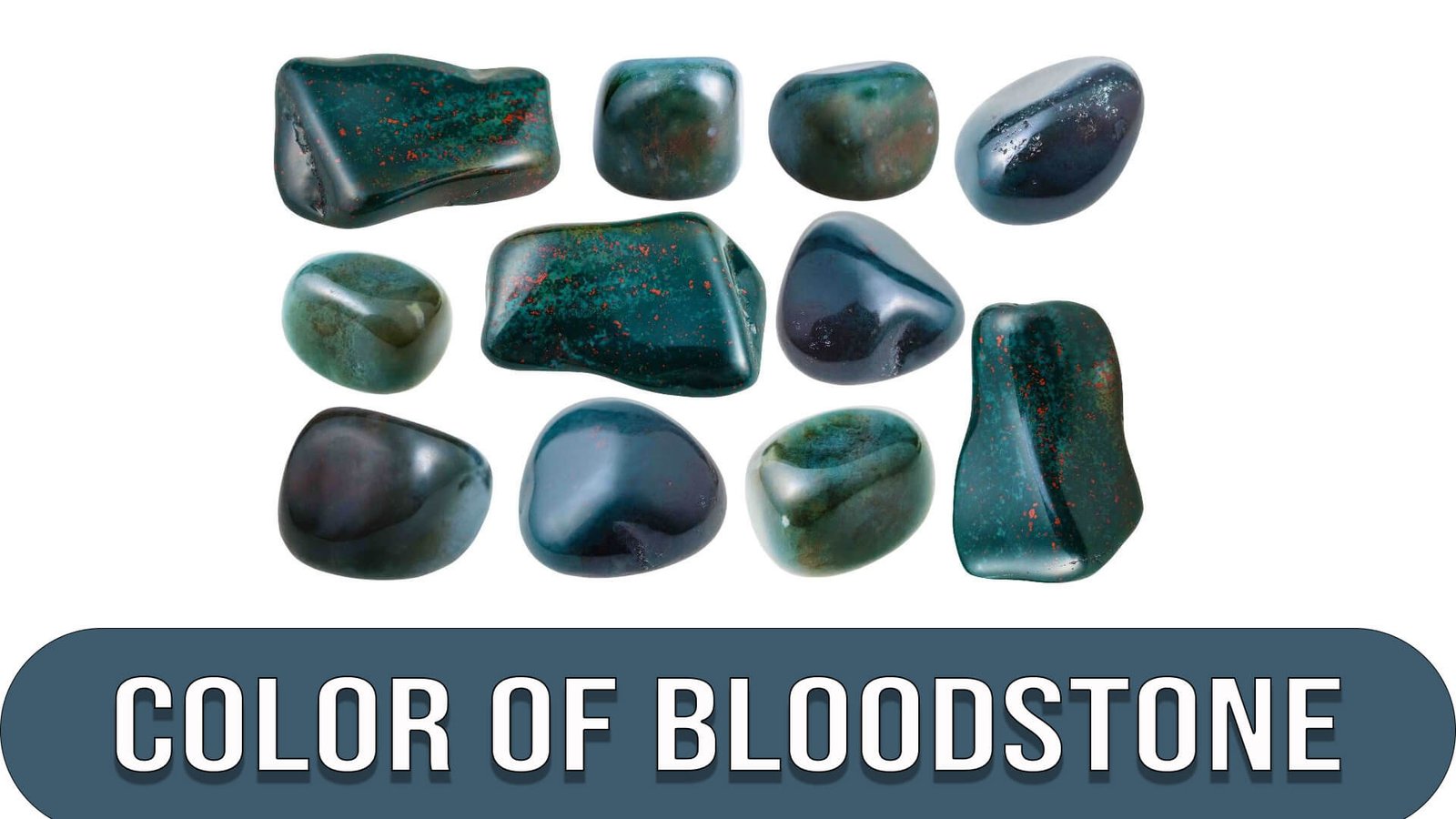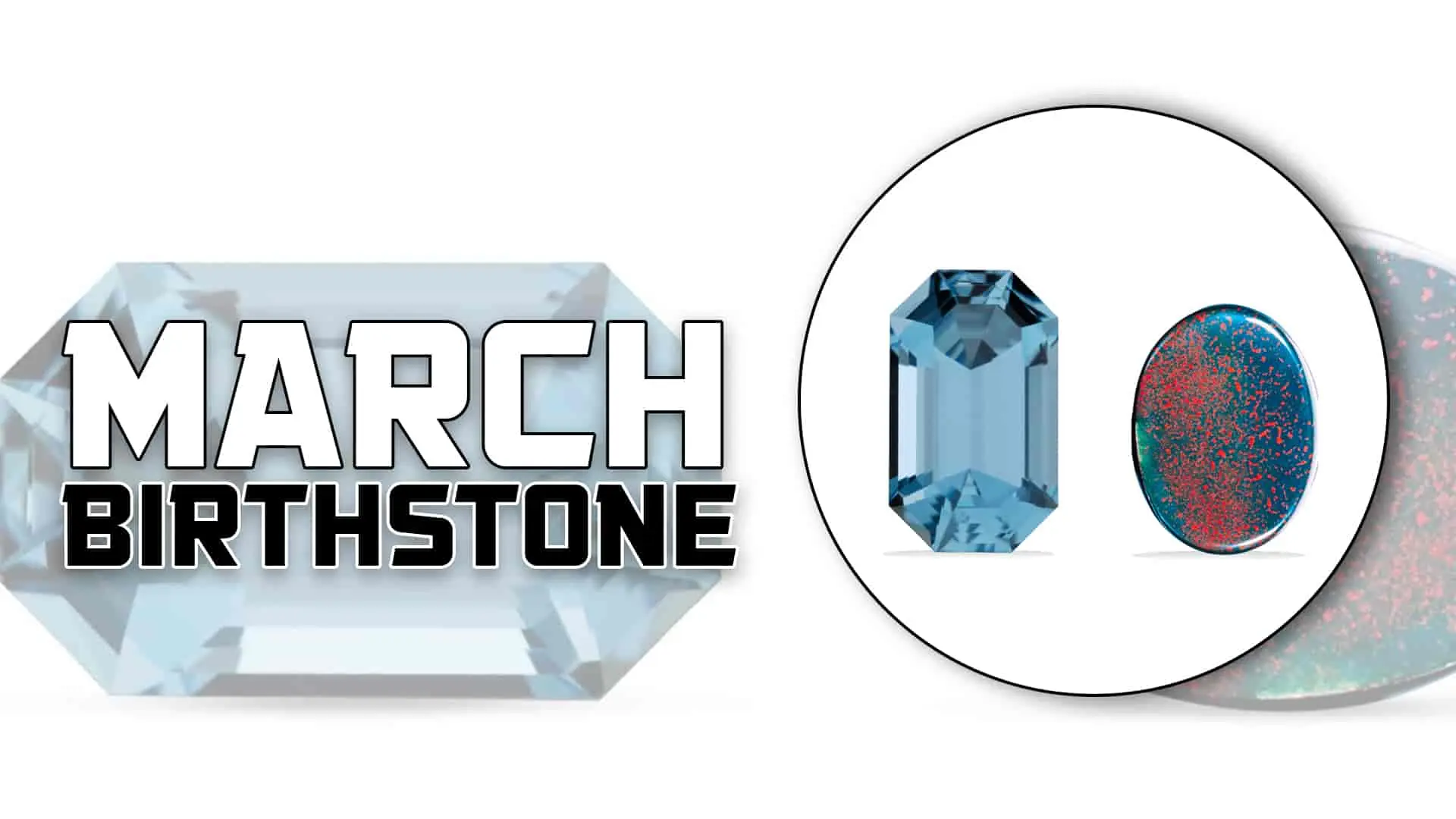Overview of March Birthstones
With their deep symbolism and stunning beauty, birthstones for March possess a seductive fascination. The birthstones for March babies, aquamarine and bloodstone inspire awe and fascination. Each gemstone has unique characteristics corresponding to the distinctive features of people born this month. These birthstones have a wide range of qualities that make them unique, from aquamarine’s calming tones to the bold allure of bloodstone.
Although aquamarine and bloodstone, the birthstones for March, have pretty different aesthetic qualities, they are both regarded as protective stones. Aquamarine is the modern birthstone of March, while bloodstone is in the traditional list of birthstones. The aquamarine birthstone conjures up the sea’s hues. Faceted aquamarines, representing the purity of the spirit and soul, ranging from deep green-blue to light, somewhat greenish-blue tones. They are frequently free of contaminants and as pure as water. The “bloodstone” birthstone, which represents the “blood” that bestows power and life to the wearer, is frequently a dark-green cabochon with scarlet patches of iron oxide.
Learn more about these two birthstones for March by reading on. In this article, we dig into the fascinating world of birthstones for March and examine its meaning and allure.
March Birthstone: Aquamarine

Aquamarine is the current birthstone for March. Aquamarine has been a prized gem to many cultures for millennia due to its pure and even blue or blue-green color, potential for huge size, and brilliant clarity. As a variant of the gem species beryl, aquamarine is an emerald’s near relative.
The term “aquamarine” refers specifically to its hue. The Latin words aqua, which means “water,” and marina, which means “of the sea,” combined to form this word. Much of the mythology surrounding the stone is related to the ocean, as the name would imply. Aquamarine also serves as the birthstone for March and is used to mark the 19th wedding anniversaries.
History of Aquamarine
Ancient seafarers thought that sirens’ jeweled chests were where aquamarines were found. This March gemstone washed up on the coast after falling off the sirens’ jewel chests. Neptune, the Roman god of the sea, prized the jewels since they were said to have come from the ocean. Aquamarines were known as “the sailor’s gem” and were carried as talismans by sailors. The deep blue stones were said to calm the waves and shield sailors from sea monsters when they were out at sea.
Numerous cultures have employed Aquamarine on land for its medicinal and mystical abilities. Aquamarine improves mental clarity and protects against toxicity. Soothsayers utilized the valuable stone frequently to tell fortunes and forecast the future. Emperor Nero wore aquamarine eyeglasses approximately 2,000 years ago. The gemstone was later used to treat short-sightedness once more in Germany. Today, the term “glasses” in German is brille, derived from “beryl.”
Origin of Aquamarine
Aquamarine naturally forms up to foot-long, six-sided crystals. Lab-grown aquamarines are available in various settings and designs if you want a more moral and environmentally responsible solution. A significant producer of aquamarine is the Brazilian state of Minas Gerais. Pakistan’s slopes of the Karakorum are popular locations for aquamarine mining. Miners ascend 9,800-13,000 feet (3,000-4,000 meters) to reach the stones. In Colorado’s Mount Antero region, aquamarines are also grown. As a result, aquamarine is considered the state gem of Colorado.
First Lady Eleanor Roosevelt received a darker blue aquamarine from the Brazilian government, which is currently safe in the Franklin D. Roosevelt Presidential Library. Aquamarines are naturally found in Kenya, Nigeria, Madagascar, Zambia, Mozambique, China, Myanmar, Russia, and Ukraine, in addition to these critical areas.
Color of Aquamarine

Aquamarine has long been prized for its crystal-clear blue hue, which occasionally shows some green. Iron is the source of the aquamarine variety’s unique blue color. Aquamarine is a naturally light-colored gemstone and does not produce very dark tones or saturations. A handful of the darkest stones may have a color similar to sapphire’s blue, although aquamarine is often much lighter.
Small aquamarine gems frequently have lighter tones and saturations than larger ones since the color of the March birthstone is amplified by the size of the crystal. The best, most intense blue and green colors are typically only possible with stones that weigh at least five carats. There are various sources, many of which are in Africa, that produce stones with greater saturations than usual. These can be tiny, but they still have vibrant and appealing colors.
Meaning and Properties of Aquamarine

Since many millennia ago, aquamarine has been cherished. Its resemblance to the ocean’s crystal clear color has encouraged a natural link between water and maritime tourism. Some people in Ancient Greek believed that Poseidon, the sea god, made aquamarine from seawater. According to other myths, aquamarine is the magical stone that mermaids’ tails are made of. The ocean-colored stone can calm threatening seas, protecting ships as well as their crew, passengers, and cargo. Both the ancient Romans and Greeks passed down this idea. Fishermen treasure the gem since it has helped their fishing endeavors. Because of this, the stone is a significant talisman for all maritime travelers.
Additionally, aquamarine cools tempers and lessens interpersonal friction. Positive communication and trust are enhanced when the diamond calms negative emotions. Many people still hold on to the belief that having an aquamarine close can strengthen happy marriages and, in fact, all relationships. Thus, a person’s level of commitment and the strength of their relationship with their partner is represented by the diamond when they wear it.
Moreover, the birthstone for March might promote tranquility. According to many, wearing the gem facilitates healing from past traumas, improves mental clarity, and reduces anxiety. Like many other blue gemstones, aquamarine positively affects physical health and boosts vitality. Some claim that the gem can assist with thyroid and hormone regulation.
Care and Cleaning of Aquamarine
Aquamarine is a very tough gem. It has a Mohs hardness grade of 7.5 to 8.5, making it sturdy enough for daily use. To clean your aquamarine, combine warm water with moderate dish soap. A soft toothbrush can also be used to eliminate any apparent filth. Ultrasonic cleaners and steam cleaning are typically secure methods for cleaning gemstones that don’t have liquid inclusions or fissures.
Cost of Aquamarine
There is a wide range of pricing for aquamarine, a captivating gemstone valued for its calm blue tint evoking the ocean, which is influenced by elements like size, color, clarity, and general quality. Aquamarine is accessible to many purchasers because its average price is a modestly-priced gemstone. Aquamarine prices range from $50 to $500 per carat, with larger, better stones fetching more fantastic prices. It’s crucial to remember that these numbers are only estimates and may vary depending on the seller’s reputation, market conditions, and other variables. Aquamarine is a sought-after gemstone in the world of jewelry and gem enthusiasts despite its fluctuating price because of its serene beauty and calming energy.
March Birthstone: Bloodstone

The bloodstone, a more convenient option for March newborns, is the second birthstone for March. This deep green gemstone has vivid flecks of hematite, a red iron oxide. Because of its striking red hue, hematite is frequently called a “bloodstone.” For its historical significance and symbolism, bloodstone is highly prized. Bloodstone boosts power and maintains youth and health. Bloodstone is a famous lucky charm today. When they desire to increase their strength and extend their lives, athletes carry bloodstones.
History of Bloodstone
Although “aquamarine” refers to the sea, bloodstone belongs to the sun. Heliotrope—another name for bloodstone—comes from the Ancient Greek for “to turn the sun.” The gem’s name possibly derives from the antiquated notion that the sun would turn red if the bloodstone were placed in a body of water. Bloodstone was also used medically. Many believed bloodstones could halt bleeding, treat tumors, and stop nosebleeds.
Gladiators carried bloodstones to improve their talents, much like contemporary athletes. Even some gladiators thought bloodstone would render them invisible to their foes. Bloodstone was also a talisman utilized by ancient attorneys and barristers who thought it would affect the results of legal proceedings. In or around 1525, the Italian carver Mateo del Nassaro sculpted a famous depiction of the crucifixion from a bloodstone. Its title is “The Descent from the Cross.” Del Nassaro meticulously cut the bloodstone so that the red dots would stand in for the blood of Christ.
Origin of Bloodstone
Chalcedony, sometimes referred to as cryptocrystalline quartz, is a type that includes bloodstone. Bloodstone comprises many densely packed crystal formations because chalcedony is a kind of polycrystalline quartz. Agate, onyx, carnelian, aventurine, and tiger’s eye are examples of polycrystalline quartz in addition to this. Although bloodstone is frequently referred to as dark green jasper, it is not a member of the Jasper family. Bloodstone lacks a granular structure, whereas jaspers often do.
Bloodstone is frequently found polished into smooth, organic shapes since it often occurs as riverbed pebbles. Other rocks may also include bloodstones embedded within them. The majority of bloodstones sold today originate in India. Brazil, Australia, China, Italy, and South Africa are some countries that have significant mining operations. California is a considerable bloodstone producer in the United States.
Color of Bloodstone

The second birthstone for March, bloodstone or heliotrope, is an opaque chalcedony, a quartz variation. Iron oxide causes occasional red or orange specks, giving it a dark green hue. The stone is primarily imported from Australia, Brazil, and India.
Meaning and Properties of Bloodstone

While less well-known than aquamarine, early civilizations considered bloodstones a magical stone endowed with protective properties. It was given the reputation of being invincible. They even thought it might affect the weather. It was used as an ornament on amulets and shields to ward off evil since it was considered a crystal for protection.
Bloodstone is regarded as both a potent energizer and a stone of protection. It aids in fostering physical vigor, vitality, self-assurance, and bravery. This makes it a helpful ally when things get challenging. Additionally, it can boost your intuition while alleviating any concerns about whether you’re heading in the proper route. Bloodstone is advantageous to fiery and obstinate Aries for the same reasons. It eases anxiety and provides emotional fortitude, which Aries frequently lacks. Strength and courage are essential aspects of the Aries mentality, yet they are also compassionate.
This stone is renowned for its ability to explain things. It helps you picture a course of action while clearing stagnant energy that produces mental and emotional barriers that frequently cloud perspective. Like aquamarine, it encourages you to let go of whatever prevents you from moving forward, enables you to channel your energy effectively, and maintains your sense of balance so you may advance with intention rather than rushing forward aimlessly.
The base, sacral, and solar plexus chakras—collectively known as the lower chakras—are three chakras with which the bloodstone has strong associations. These chakras represent one’s connection to the material world and earthly concerns like power, pleasure, and survival. The anchoring qualities of bloodstone ensure that they remain in alignment. You might choose to wear or keep this birthstone for March around the house to benefit from its calming and purifying qualities. Holding a bloodstone in your palm while you meditate can assist you in realizing your goals. Of course, you may also wear it as jewelry to inspire confidence or to get you moving when you’re stuck.
Care and Cleaning of March Birthstones
The Mohs scale rates bloodstone between 6.5 and 7, making it slightly softer than aquamarine. Keep your bloodstone away from excessive heat and harsh chemicals, even if it is usually safe to wear daily. You can prevent any discoloration by doing this. Cleaning bloodstones is generally quite simple because of its usual smoothness. For routine cleaning, running our stone under lukewarm water should work. Use warm water, mild soap, and a gentle brush for a deeper clean. The best way to avoid scratching your bloodstone is with delicate fabrics. Dry your stone gently with a cloth before storing it on velvet or another soft material.
Cost of Bloodstone
Bloodstone is a rare and exquisite gemstone whose average price can change depending on several variables, including its size, quality, and market demand. Bloodstone is typically regarded as a reasonably priced gemstone, making it available to various customers. Bloodstones cost anywhere from $10 to $50 per carat, with larger and better stones fetching more fantastic prices. It’s crucial to keep in mind that these sums are approximations and could change depending on the seller, the region, and the state of the market. Bloodstone is a desirable alternative for both gemstone collectors and enthusiasts due to its price, which strikes a convincing balance between affordability and the attractiveness of its deep green color embellished with vivid crimson speckles.
Closing Remarks
Bloodstone and aquamarine stand out as exceptional March birthstones in the world of birthstones. Aquamarine symbolizes peace, purity, and everlasting youth thanks to its ethereal blue tones reminiscent of the ocean’s depths. Bloodstone, however, represents strength, courage, and protection thanks to its captivating red and deep green speckles. Both precious stones give insight into the unique characteristics and personalities of people born in March. These birthstones capture the spirit of those born during this magical month, whether it is aquamarine’s calming influence or bloodstone’s vibrant vitality, making them prized and significant emblems of identification and self-expression.
Read More: January Birthstone, Febuary Birthstone, April Birthstone, May Birthstone, June Birthstone, July Birthstone, August Birthstone, September Birthstone, October Birthstone, November Birthstone, December Birthstone





